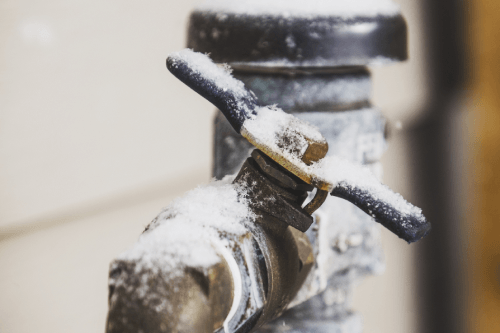Preventing Frozen Pipes in Winter: Critical Strategies
Preventing Frozen Pipes in Winter: Critical Strategies
Blog Article
They are making a few great points relating to Preventing and dealing with frozen pipes overall in the content which follows.

Cold weather can damage your pipes, specifically by freezing pipelines. Below's how to prevent it from occurring and what to do if it does.
Intro
As temperature levels decline, the risk of frozen pipelines rises, possibly causing pricey repair work and water damage. Recognizing how to stop icy pipelines is important for home owners in chilly climates.
Recognizing Frozen Pipelines
What triggers pipes to freeze?
Pipelines freeze when exposed to temperatures below 32 ° F (0 ° C) for extended periods. As water inside the pipelines freezes, it broadens, taxing the pipe wall surfaces and potentially causing them to burst.
Risks and problems
Frozen pipes can cause supply of water interruptions, home damages, and costly repair work. Burst pipelines can flooding homes and create extensive structural damages.
Indications of Frozen Piping
Identifying frozen pipelines early can stop them from breaking.
How to recognize frozen pipes
Look for reduced water flow from taps, uncommon smells or noises from pipelines, and visible frost on revealed pipes.
Prevention Tips
Protecting at risk pipelines
Cover pipes in insulation sleeves or make use of warmth tape to protect them from freezing temperatures. Focus on pipelines in unheated or exterior locations of the home.
Home heating techniques
Keep indoor spaces appropriately heated up, especially areas with plumbing. Open cupboard doors to allow warm air to circulate around pipelines under sinks.
Shielding Outside Pipes
Yard hoses and exterior faucets
Separate and drain pipes garden pipes prior to winter months. Mount frost-proof spigots or cover exterior taps with shielded caps.
What to Do If Your Pipelines Freeze
Immediate actions to take
If you believe frozen pipes, maintain faucets open to relieve stress as the ice melts. Make use of a hairdryer or towels soaked in warm water to thaw pipes gradually.
Long-Term Solutions
Structural modifications
Consider rerouting pipes away from exterior wall surfaces or unheated areas. Add extra insulation to attic rooms, basements, and crawl spaces.
Updating insulation
Buy top notch insulation for pipelines, attic rooms, and wall surfaces. Correct insulation assists maintain regular temperature levels and reduces the risk of icy pipes.
Final thought
Avoiding frozen pipelines calls for proactive steps and fast feedbacks. By understanding the causes, signs, and safety nets, property owners can secure their plumbing throughout winter.
5 Ways to Prevent Frozen Pipes
Drain Outdoor Faucets and Disconnect Hoses
First, close the shut-off valve that controls the flow of water in the pipe to your outdoor faucet. Then, head outside to disconnect and drain your hose and open the outdoor faucet to allow the water to completely drain out of the line. Turn off the faucet when done. Finally, head back to the shut-off valve and drain the remaining water inside the pipe into a bucket or container. Additionally, if you have a home irrigation system, you should consider hiring an expert to clear the system of water each year.
Insulate Pipes
One of the best and most cost-effective methods for preventing frozen water pipes is to wrap your pipes with insulation. This is especially important for areas in your home that aren’t exposed to heat, such as an attic. We suggest using foam sleeves, which can typically be found at your local hardware store.
Keep Heat Running at 65
Your pipes are located inside your walls, and the temperature there is much colder than the rest of the house. To prevent your pipes from freezing, The Insurance Information Institute suggests that you keep your home heated to at least 65 degrees, even when traveling. You may want to invest in smart devices that can keep an eye on the temperature in your home while you’re away.
Leave Water Dripping
Moving water — even a small trickle — can prevent ice from forming inside your pipes. When freezing temps are imminent, start a drip of water from all faucets that serve exposed pipes. Leaving a few faucets running will also help relieve pressure inside the pipes and help prevent a rupture if the water inside freezes.
Open Cupboard Doors
Warm your kitchen and bathroom pipes by opening cupboards and vanities. You should also leave your interior doors ajar to help warm air circulate evenly throughout your home.
:strip_icc()/snow-outdoor-faucet-pipes-4af65d1e5e904fb1aa7bf74071fe5d89.jpg)
I found that blog posting on Winter Plumbing Precautions: Preventing Frozen Pipes when doing a search on the internet. Are you aware of someone else who is in the market for the subject? Take a moment to share it. I appreciate your readership.
Information Here Report this page